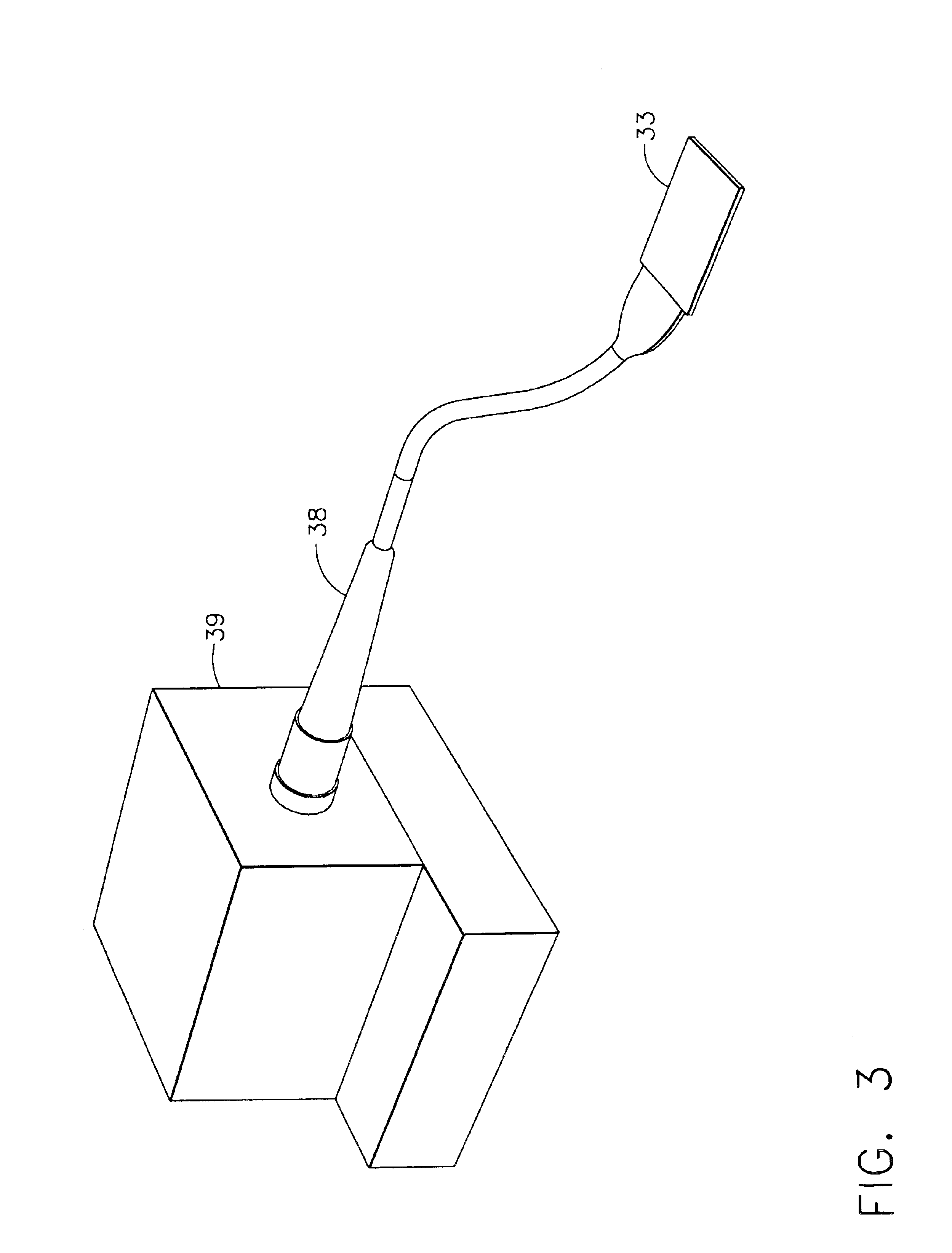Fiber optic fabric with opaque coating for directional light emission
a fiber optic fabric and opaque coating technology, applied in the field of fiber optic materials, can solve the problems of increasing light leakage, inability to allow both lit and unlit areas along the fiber, and inefficient directional lighting
- Summary
- Abstract
- Description
- Claims
- Application Information
AI Technical Summary
Benefits of technology
Problems solved by technology
Method used
Image
Examples
example 1
A fiber optic fabric was produced according to an embodiment of the present invention. A sample of Fibertex™ fabric was purchased from Lumitex, Inc., Strongsville, Ohio. A coating 32 comprised of black epoxy was applied to the fabric by painting. The coated fabric was then sanded. The sanding removed the coating 32 and the fiber cladding at the high points of the weave, producing the openings 34.
A system for illuminating the fabric is shown in FIG. 3. As can be seen, a glass rod 38 was then attached to the fiber optic fabric 33, and a light engine 39 was connected to the glass rod 38. The glass rod 38, which is known in the art, may be any fiber optic light guide with suitable couplings. The light engine 39, which is known in the art, may be any source of illumination. The fabric was then photographed at various elevations from the plane of the fabric to show the angular intensity distribution. FIGS. 4 through 9 are photographs of the fabric as seen from elevations of 10°, 26°, 42°,...
PUM
| Property | Measurement | Unit |
|---|---|---|
| exit angle | aaaaa | aaaaa |
| angle | aaaaa | aaaaa |
| acceptance angle | aaaaa | aaaaa |
Abstract
Description
Claims
Application Information
 Login to View More
Login to View More - R&D
- Intellectual Property
- Life Sciences
- Materials
- Tech Scout
- Unparalleled Data Quality
- Higher Quality Content
- 60% Fewer Hallucinations
Browse by: Latest US Patents, China's latest patents, Technical Efficacy Thesaurus, Application Domain, Technology Topic, Popular Technical Reports.
© 2025 PatSnap. All rights reserved.Legal|Privacy policy|Modern Slavery Act Transparency Statement|Sitemap|About US| Contact US: help@patsnap.com



